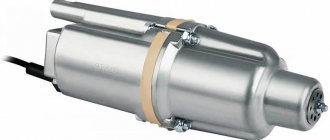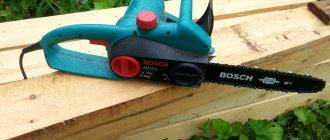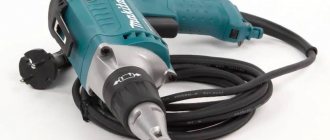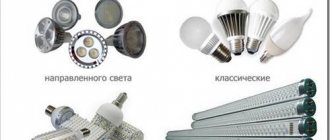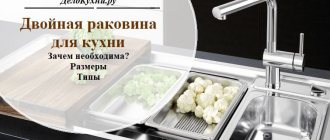Review author: Terrari School of Design
The right hacksaw for wood can easily handle trimming branches of bushes and trees, minor carpentry work around the house, help repair furniture, and turn anything out of wood.
Photos of a hacksaw for wood can be found not only on the windows of online stores, but also near various crafts, wooden sculptures, and rustic ornaments for window trims.
Types of hacksaws for wood
This practical and inexpensive tool is distinguished mainly by the type of saw blade and the shape of the handles.
Wood saw:
- can be made of various grades of steel;
- have a varied shape and width of the hacksaw blade;
- contain a different number of wedge-shaped or figured teeth.
The metal part is the main working element, driven by engine power or manual force. To ensure good quality cuts, you need to choose the right tool.
BAHCO Superior 2600-16-XT11-HP 400 mm for universal work
The hacksaw is convenient and functional. It is designed to perform a wide range of tasks. With its help you can saw wood, plywood, hardboard and even chipboard. The length of the steel blade is 400 mm. Teeth measuring 7-8 mm and the same pitch are made using a special type of hardening. Their shape is triangular, which allows them to maintain their sharpness for a long time (sharpening is not required for several years even with frequent use).
The handle is made of plastic with the addition of rubber, so the palm does not slip during operation. Feature of the tool: the handle allows you to mark angles at 45 and 90 degrees. The canvas is coated with a special compound that prevents the formation of corrosion processes.
Reviews
The ease of working with different materials, including plywood, is noted. Easy movement - with normal pressing, the blade does not deviate from the specified direction.
Pros:
- increased reliability and durability of sharpening;
- the ability to mark corners;
- special triangular sharpening of teeth;
- protective coating of the fabric.
Minuses:
- high cost of replacement blades.
Hacksaw blades
Blades differ from each other mainly in their design and the material from which they are made.
Tooth geometry
There are four types of teeth on a hacksaw:
- wavy - used for straight cutting,
- inclined ones are used for the most precise cutting,
- large ones are distinguished by very fast and smooth operation. However, the disadvantage of this type of teeth is that they can leave a rough cut, that is, a mark on the material;
- fine with open sharpening - provides fast rough cutting.
Tooth spacing
Also called pitch, the smaller the gap, the more teeth working simultaneously in the material. This in turn makes the cutting process smoother and vibration-free. For metal saw blades the distance is about 1.2 mm, and for wood products it increases to about 4 mm.
Blade thickness and width
The thickness of the blade affects the processing accuracy and durability of the tool itself. The thicker the blade, the stiffer it is and the more accurate the cut is possible (only straight and at a slight angle). The width of the blade also plays an important role.
If it is necessary to make curved cuts, purchase a narrow blade (about 4 mm), which can be easily maneuvered. Wide blades are used for straight cutting only.
Handle type
There are three types of blades on the market based on handles, that is, according to the method of attaching the handle and hacksaw. This can be a universal or T-shaped mount.
Disadvantages of reciprocating saws
And now about the shortcomings. First of all, this is the low cutting accuracy. The reciprocating saw is designed for relatively simple and rough work. For work that requires thin, smoothly curved cuts, it is better to use a jigsaw.
It is also worth noting the relatively low performance. According to this indicator, the electric hacksaw is inferior to the circular saw and grinder.
And finally, vibration. The vibrations of the instrument, which radiate into the hand, create some inconvenience, especially if the work session lasts more than half an hour.
Materials for making a hacksaw
To simplify the task for amateur gardeners and beginners in carpentry, hacksaw manufacturers use appropriate markings that indicate what material was used.
HCS - carbon steel blades. These are the cheapest and least durable products, so they are mainly used for cutting soft materials such as wood or wood-based materials.
CV - chrome vanadium steel is used for their manufacture. The blades are of slightly higher quality than HCS tools.
HSS - made of high-speed, high-alloy steel, they are highly durable, so they can be used not only for wood, but also for metal.
BiM - produced by connecting an HSS belt to an HCS belt. As a result, the saw blades are very strong and at the same time flexible. Thanks to their extended service life, they can be used for long periods of time cutting both wood and metal.
HM/TC - the saw blade body is made of carbon steel (HCS), and the working part is made of carbide (fine or coarse grain). It is used primarily for cutting the hardest materials, as well as materials that are difficult to cut (such as glass). This hacksaw cannot be used on wood.
Specifications
The power of the tool varies from 500 to 1500 W. The higher the number, the “stronger”, heavier and more expensive it is. Most reciprocating saws consume between 0.9 and 1.2 kW. This is a kind of “golden mean”, the optimal price/power ratio.
As for power, the saw can receive it from the mains. In this case, the device is supplied with a cord about 4 m long, which allows you to work at some distance from the outlet. This option is optimal for home and workshop. For gardening, cordless tools are best.
Battery models
Cordless reciprocating saw Ryobi RRS1801M-0 ONE+. Stroke amplitude 22 mm, weight 2.33 kg. Price 5939 rub. (without battery)
Saw WORX WG894E. Stroke amplitude 16 mm, weight 1.3 kg. Price 3990 rub. (without battery)
Bosch KEO saw. Saw blade length 150 mm, weight 1.54 kg. Price 8600 rub. (with battery)
Saw Metabo ASE 18 LTX. Stroke amplitude 30 mm, weight 3.6 kg. Price 11,500 rub. (without battery)
Saw Milwaukee M18 CSX-902X FUEL. Stroke amplitude 28.6 mm, weight 4.4 kg. Price 57,300 rub. (with battery)
The battery life of a cordless reciprocating saw is usually about 30 minutes. Charging time for the power supply does not exceed one hour
Structurally, the reciprocating saw is quite simple, but manufacturers provide it with many additional options. Let's look at the main ones.
Speed controller
allows you to select the optimal cutting mode for each material. As a rule, this is just a button that allows you to “gas”.
Pendulum stroke
means that in addition to reciprocating movements, the blade also makes oscillatory movements.
This increases the performance of the tool and protects the file from overheating. The pendulum speed can be adjusted. The harder the material, the smaller the pendulum pitch should be. And when working with “geeth-crushing” stones, ceramics, etc. this function must be turned off. The same applies to curved cuts. Support shoe
Lock against accidental start
can protect against injury due to “unauthorized” pressing. Typically, this is an additional button that must be pressed simultaneously with the trigger to turn on the tool.
Vibrations of the tool, which inevitably occur during operation, are reduced with the help of elastic linings on the handle and body. But the most advanced reciprocating saws have a vibration damping system in the form of a dynamic counterweight.
Despite the fact that you can work with an electric hacksaw suspended, sometimes you need to firmly press it to the surface. This requires a support shoe
. In some models it is fixed rigidly, in others it can change its inclination and rotate around its axis.
The electrodynamic brake stops the reciprocating saw blade almost instantly after turning it off
Safety clutch
allows you to avoid kickback when the equipment jams.
Overload protection
means that the device will automatically turn off if it overheats.
Soft start function
- this is a smooth descent without a jerk that could tear the instrument out of your hands. This option is usually equipped with powerful professional saws to increase their safety.
Wood saw - how to choose
Tools for wood and wood materials make up the vast majority of the offerings of various stores. For this reason, they come in different varieties and the best hacksaw for wood has the correct sharpening, a comfortable grip and is as safe as possible to use.
Among them will be:
- universal blade - used for almost all types of cuts available on the market with oblique sharpening blades;
- Splash-free blade - its teeth face in the opposite direction than standard products. Thanks to this design, it cuts in a downward direction, allowing the fragments to be evacuated. Most often used for fibreboards;
- blade for precision cutting - its teeth are angled and the sides are ground so that the entire structure has a trapezoidal cross-section. This allows precise sawing of all types of wood;
- bimetallic blade - it is much stronger than other blades, so it can be used for a longer time;
- blade for curved cutting - it is very narrow, so it is used for cutting curves;
- panel saw blade - also known as a laminator because it can cut wood and laminated panels;
- The hardwood blade is thick and very long, resulting in a large number of teeth on the saw blade. Can cut wood thicker than 130 mm;
- a jigsaw blade for wood with pieces of metal is a bimetallic blade, the durability of which and the wavy blades allow you to process wood, for example, with nails;
- aluminum saw blade - with obliquely sharpened teeth and converging polished sides.
BLACK+DECKER BDHT0-20173 500 mm with large tooth
A hacksaw allows you to cut wood blanks of various thicknesses. The length of the blade is 500 mm, the material is steel. The tool moves in the longitudinal and transverse directions. The teeth have a triangular sharpening on each side.
Due to this, maximum smoothness of movement is achieved. The dimensions are 7-8 mm, the pitch is 7 mm. The cut is made quickly both forward and backward. Features an extended service life.
A tool for professional craftsmen or those who often use a hacksaw at home.
Reviews
Buyers like a high-quality blade and the ability to make cuts on any type of wood materials. The downside is that the equipment is sparse.
Pros:
- sawing forward and backward;
- triangular sharpening;
- hardened teeth;
- improved handle shape;
- long service life.
Minuses:
- no replacement blades included;
- no storage case.
Photo of a hacksaw for wood
Gross Piranha 24119 550 mm Japanese steel
A lightweight and compact tool that can be used to cut wood and synthetic materials. The teeth are made using laser technology taking into account international standards, so the sharpening lasts for a long time. The size and pitch are 7-8 mm. Steel blade, length - 550 mm.
The handle does not slip, as it is made of plastic and additionally rubberized. The tool moves easily and smoothly. There is no deviation from the specified blade direction. Durability is also ensured by special high-carbon Japanese steel.
A lightweight and durable hacksaw designed for a wide range of work with various materials.
Reviews
The tool cuts wood, laminate and synthetic materials with ease. Lasts a long time even with increased daily loads.
Pros:
- the working edge of the blade has a segmented structure (the size and shape of the teeth alternate);
- you can work with wood of varying degrees of humidity;
- the canvas is hard and durable;
- The kit includes a plastic protective cover;
- low risk of teeth chipping.
Minuses:
- The storage case is not included in the package.
STANLEY FatMax 2-20-528 380 mm with special handle
The hacksaw is intended for woodworking only. The length of the canvas is 380 mm. The handle is reinforced with aluminum. Also, its shape resembles a palm, making it convenient to hold the instrument in your hand. The blade is made of strong steel. Corrosion is prevented by a special coating. The tool can be used in the country or at home, in production. The teeth, with a size and pitch of 7-8 mm, are hardened and have a triangular sharpening.
The tool is suitable for professionals, but will also be useful for beginners.
Reviews
The hacksaw moves easily and quickly during the sawing process, the teeth do not get stuck, as friction is reduced. Safe to use, you can cut wood longitudinally and transversely.
Pros:
- the handle is reinforced with aluminum;
- triangular sharpening of teeth;
- resistance to friction and wear;
- anti-corrosion coating;
- there are markings on the handle that allow you to measure angles of 45 and 90 degrees;
- protective case included;
- hard fabric.
Minuses:
- high price.
